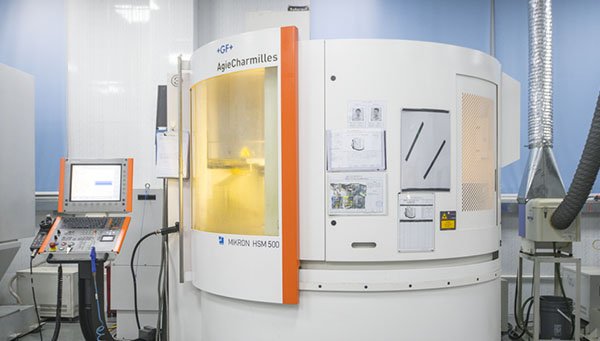The Importance of CNC Programming in Achieving Precision and Reducing Error
At Elite, a trusted plastic injection mold manufacturer in China, our commitment to quality and precision is at the core of our operations. One of the most critical aspects of ensuring the accuracy of the molds and parts we produce is CNC (Computer Numerical Control) programming. CNC programming is the foundation of every machining process, guiding the machines to follow specific tool paths, cut depths, and feed rates. This article explores the importance of CNC programming in achieving precision, reducing errors, and maintaining the high-quality standards that Elite is known for.
What is CNC Programming?
CNC programming involves the creation of a set of instructions that guide CNC machines to perform specific operations, such as cutting, drilling, milling, or turning. These instructions, written in G-code or other programming languages, define the movement of machine tools, their speed, feed rate, and the path they follow to machine a workpiece.
Key Features of CNC Programming:
- Automation: CNC programming automates the machining process, ensuring consistent accuracy across multiple parts.
- Precision: The instructions generated through CNC programming allow machines to work with extremely tight tolerances.
- Customization: CNC programs can be customized to produce parts with complex geometries and unique features.
The Role of CNC Programming in Mold Manufacturing
At Elite, CNC programming is integral to the production of high-precision mold components. Every component, from mold cavities and cores to ejector pins and inserts, relies on accurate CNC programming to ensure dimensional accuracy, fine surface finishes, and seamless assembly.
1. Achieving Tight Tolerances in Mold Components
In plastic injection mold manufacturing, achieving tight tolerances is critical for ensuring the proper fit and function of mold components. CNC programming allows us to control every aspect of the machining process, from the tool path to the cutting depth, ensuring that each part is machined to the exact specifications.
- How CNC Programming Helps: By precisely defining the cutting parameters, CNC programming enables us to produce components with tolerances within microns, ensuring the highest levels of accuracy.
2. Ensuring Consistency Across Production Runs
One of the key advantages of CNC programming is the ability to reproduce identical parts across multiple production runs. Once a CNC program is created, it can be reused to produce the same part with the same level of precision, ensuring consistency and repeatability.
- How CNC Programming Helps: CNC programs store the precise tool paths and cutting parameters required to machine each part, allowing us to produce identical components consistently over time, regardless of the production volume.
3. Reducing Human Error
CNC programming automates the machining process, reducing the reliance on manual operations and minimizing the risk of human error. Manual machining can introduce variability, especially in complex operations, but CNC machines follow their programmed instructions with precision.
- How CNC Programming Helps: By automating the machining process, CNC programming reduces the likelihood of mistakes caused by operator fatigue or inexperience, leading to higher-quality parts and fewer errors.

Benefits of CNC Programming in Achieving Precision and Reducing Errors
Effective CNC programming offers numerous benefits that directly impact the quality, efficiency, and accuracy of mold manufacturing at Elite.
1. Unmatched Precision and Accuracy
CNC programming allows machines to perform highly precise operations, achieving tight tolerances that are critical in mold manufacturing. This precision ensures that mold components fit together seamlessly and function as intended during the injection molding process.
- Benefit: High-precision CNC programming reduces the risk of part defects, such as flashing, warping, or misalignment, resulting in consistent, high-quality molded parts.
2. Improved Efficiency and Speed
CNC programming enables machines to operate continuously with minimal supervision, increasing production speed and efficiency. The ability to optimize tool paths and machine movements through programming helps reduce cycle times and overall production costs.
- Benefit: Faster production times allow Elite to deliver high-quality molds more quickly, helping clients meet tight deadlines without sacrificing quality.
3. Customization for Complex Geometries
CNC programming provides the flexibility to create custom parts with complex geometries, intricate details, and unique features. This is particularly important in mold manufacturing, where parts often require complex contours, undercuts, and fine details.
- Benefit: The ability to customize CNC programs enables Elite to produce molds with complex designs, catering to a wide range of industries and applications.
4. Minimization of Material Waste
By precisely controlling the cutting paths and machining operations, CNC programming helps minimize material waste. The optimized tool paths ensure that only the necessary material is removed, reducing scrap and saving costs.
- Benefit: Reduced material waste contributes to more cost-effective production, allowing Elite to offer competitive pricing while maintaining high-quality standards.
5. Enhanced Repeatability and Consistency
Once a CNC program is created, it can be used repeatedly to produce identical parts with the same level of precision. This repeatability is essential for high-volume production, ensuring that every part meets the same specifications without variation.
- Benefit: Consistency in part production ensures that all mold components meet the required standards, reducing the need for rework and minimizing the risk of defects.
Key Steps in CNC Programming at Elite
At Elite, we follow a structured approach to CNC programming to ensure that every mold component is produced with the highest levels of precision and accuracy. Below are the key steps involved in CNC programming for mold manufacturing.
1. CAD Design Creation
The CNC programming process begins with creating a digital design using CAD (Computer-Aided Design) software. This 3D model defines the shape, dimensions, and features of the component that will be machined.
- Step 1: Create a detailed 3D design of the part using CAD software, incorporating all necessary dimensions, tolerances, and features.
- Step 2: Ensure that the design meets the specific requirements of the mold or part, such as cavity dimensions or insert details.
2. CAM Toolpath Generation
Once the CAD design is complete, it is imported into CAM (Computer-Aided Manufacturing) software, which generates the toolpaths and machining instructions for the CNC machine.
- Step 1: Define the cutting tools, spindle speeds, feed rates, and tool movements required to machine the part.
- Step 2: Optimize the toolpaths to ensure efficient material removal while maintaining the required tolerances.
3. Simulation and Verification
Before the program is executed on the CNC machine, a simulation is run to verify the toolpaths and ensure there are no collisions or errors in the machining process.
- Step 1: Run a simulation of the CNC program to verify that the toolpaths are correct and that the machine movements will produce the desired result.
- Step 2: Check for potential issues, such as tool collisions or overcuts, and make adjustments as needed.
4. Program Execution on CNC Machine
Once the CNC program has been verified, it is transferred to the CNC machine, and the machining process begins. The machine follows the programmed instructions to perform the required operations.
- Step 1: Load the CNC program onto the machine and ensure the correct tools and materials are in place.
- Step 2: Begin the machining process, with the machine automatically following the programmed toolpaths to produce the part.
5. Post-Process Inspection and Adjustment
After machining is complete, the finished part is inspected to ensure it meets the required specifications. If necessary, adjustments can be made to the CNC program to fine-tune the machining process.
- Step 1: Inspect the finished part using precision measuring tools such as micrometers and calipers to verify that it meets all tolerances and specifications.
- Step 2: Make any necessary adjustments to the CNC program to improve accuracy or efficiency for future production runs.
Common CNC Programming Challenges and How Elite Overcomes Them
While CNC programming is essential for achieving precision and reducing errors, there are several challenges that can arise during the programming process. At Elite, we have developed strategies to overcome these challenges and ensure that our CNC programming delivers the best possible results.
1. Complex Geometry and Toolpath Optimization
Programming complex geometries can be challenging, especially when dealing with intricate features or tight spaces. Optimizing the toolpaths for efficiency while maintaining accuracy is crucial.
- Solution: At Elite, we use advanced CAM software and experienced CNC programmers to optimize toolpaths for complex geometries, ensuring efficient material removal without compromising accuracy.
2. Tool Selection and Wear
Choosing the right tools for the job is critical to ensure the best machining performance. Additionally, tool wear can impact the accuracy and quality of the final part.
- Solution: We use high-quality cutting tools specifically selected for the material being machined and monitor tool wear closely. Our CNC programs are designed to account for tool wear, ensuring consistent results.
3. Machining Speed vs. Precision
Balancing machining speed with precision is a common challenge in CNC programming. Faster machining speeds can increase productivity but may compromise accuracy if not carefully controlled.
- Solution: At Elite, we optimize our CNC programs to strike the right balance between speed and precision, ensuring that parts are produced quickly without sacrificing quality.
Conclusion
CNC programming is a critical element in achieving the high levels of precision, accuracy, and efficiency required for plastic injection mold manufacturing. At Elite, we rely on advanced CNC programming techniques to produce mold components that meet the exact specifications of our clients while minimizing errors and reducing production costs. By automating the machining process and optimizing toolpaths, CNC programming enables us to deliver consistent, high-quality parts at competitive prices.
If you're looking for a reliable plastic injection mold manufacturer that leverages the power of CNC programming to achieve precision and reduce errors, Elite is your ideal partner. Contact us today to learn more about our capabilities and how we can support your manufacturing needs.
Related news
Our Certificates
By co-operating with Elite Mold, you have selected one of the most reliable ISO 9001 certified plastic mold manufacturer, Elite Mold as a plastic injection mold manufacturer specializing in plastic injection mold and supplying plastic injection molding services for plastic mold design, prototype makings, mold flow analysis, precise machining, OEM services, ODM services and so on, building custom plastic injection molding. We are committed to enhance the Process optimized and quality of service, shorten lead time and assist in lowering inventory, by providing new products every year to bring in continuous and higher profits for our clients. The ability to produce mold at the International standard, strong engineering and mold design capability, aggressive delivery, competitive pricing and business integrity continues to be the success factor of Elite Mold.










